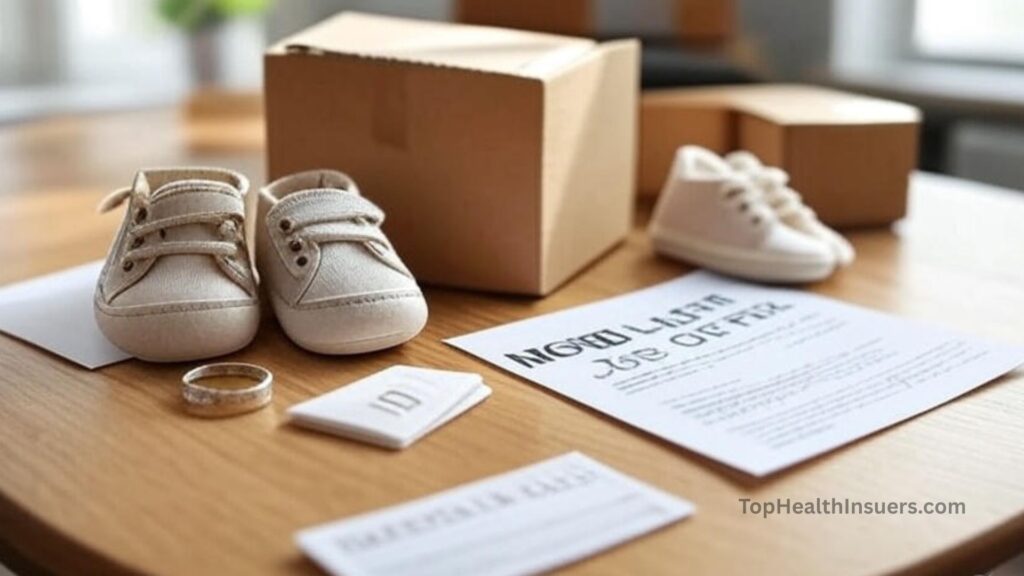Can I Get Coverage Outside the Open Enrollment Window?
Life is unpredictable. You might switch jobs, move to a new city, get married, or welcome a baby. And suddenly, you realize you don’t have health insurance—and the Open Enrollment Period (OEP) has already passed.
Before panic sets in, take a deep breath. Missing open enrollment isn’t the end of the road. There are several ways to get coverage outside the standard window. In this guide, we’ll explore all your options—from Special Enrollment Periods to Medicaid, CHIP, COBRA, and short-term insurance—so you can stay protected no matter what life throws at you.
Life Happens—And That’s Okay
Health insurance isn’t just a bureaucratic box to check—it’s protection for your well-being and your finances. Life doesn’t always go as planned:

- Job loss or job change
- Marriage, divorce, or legal separation
- Having or adopting a child
- Moving to a new state
- Aging out of a parent’s health plan
Fortunately, the U.S. health system has mechanisms in place for these scenarios. Missing open enrollment doesn’t mean you’re left out in the cold. Let’s dive into the main options.
What Is a Special Enrollment Period (SEP)?
A Special Enrollment Period (SEP) is a limited-time window that lets you enroll in a health plan outside the regular open enrollment. SEPs are triggered by Qualifying Life Events (QLEs), which are specific changes in your life that affect your health coverage needs.
During an SEP, you can:
- Enroll in a new Marketplace plan
- Change your existing plan
- Add dependents or remove coverage
Most SEPs last 60 days from the date of the qualifying event, so timing is critical.
Pro Tip: Keep your important documents handy—marriage certificates, birth records, job termination letters, or lease agreements—to speed up the application process.

Also Read: Is Health Insurance More Expensive in New York?
What Counts as a Qualifying Life Event (QLE)?
To qualify for an SEP, your life event must meet certain criteria. Some common QLEs include:

- Getting married or divorced
- Having or adopting a child
- Losing previous health coverage (job loss, aging out of a parent’s plan, or Medicaid expiration)
- Moving to a new state or coverage area
Required documentation may include:
- Marriage or divorce certificates
- Birth or adoption papers
- Job termination or loss of coverage notices
- Lease agreements or proof of residency
These events trigger a 60-day window for enrollment, so acting fast is essential.
Medicaid and CHIP: Year-Round Coverage
If you’re looking for low-cost or free coverage, Medicaid and the Children’s Health Insurance Program (CHIP) are excellent options. The best part? You can apply anytime, not just during open enrollment.
What They Cover
Medicaid
- Doctor visits and preventive care
- Hospital stays and emergency care
- Prescription drugs
- Mental health and substance abuse services
CHIP
- Health coverage for children, and sometimes pregnant women
- Doctor visits, prescriptions, and hospital stays
- Vaccinations and preventive screenings
How to Apply
- Visit your state’s Medicaid website or HealthCare.gov
- Submit proof of income and residency
- Provide identification documents, like birth certificates, passports, or legal status papers
Tip: Each state may have slightly different application processes, so check local requirements carefully.

Also Read: Should I Choose a Plan With a Low Premium or Low Deductible?
Other Ways to Get Coverage Outside Open Enrollment
Even if you don’t qualify for an SEP or Medicaid/CHIP, there are other strategies:

1. Research Your Options
Take time to compare plans on your state or federal marketplace. Consider:
- Coverage needs: Prescription medications, specific doctors, or regular medical visits
- Budget: Premiums, deductibles, and out-of-pocket costs
- Flexibility: Some plans offer extras like telehealth, wellness programs, or mental health support
2. Apply for Medicaid or CHIP
Even if you initially didn’t qualify, circumstances like job loss or reduced income can make you eligible. You can apply online, by mail, or in person. Required documents include:
- Proof of income (pay stubs, tax returns)
- Proof of citizenship or legal residency
Keep track of your application status through email or your online account.
3. Deadlines Matter
While Medicaid and CHIP are year-round, Special Enrollment Periods are time-limited. Missing the 60-day window can leave you uninsured until the next open enrollment.
- 📅 Pro Tip: Set reminders for key dates and keep essential documents ready.
Temporary Coverage Options
If you need coverage immediately or for a short period, consider these alternatives:

COBRA
COBRA lets you continue your previous employer-based health insurance for a limited time after leaving a job.
- Keeps your existing coverage
- You pay the full premium (employer subsidy may end)
- Coverage duration typically lasts 18–36 months, depending on circumstances
Short-Term Health Insurance
Short-term plans are temporary solutions for gaps in coverage:
- Usually 1–3 months in length
- Lower premiums than standard ACA plans
- Limited benefits; often exclude pre-existing conditions
- Not ACA-compliant, so they’re not a long-term solution
⚠️ Reminder: Only use short-term plans as a stopgap while seeking long-term coverage.
Mark Your Calendar for Open Enrollment
Open Enrollment usually runs November to January, depending on your state. This is your annual opportunity to:
- Enroll in a new plan
- Make changes to your current plan
- Review your coverage needs and budget
Even if you’ve used an SEP or temporary plan, staying on top of open enrollment ensures you have stable, comprehensive coverage.
Real-World Example
Case Study: Sarah, a 32-year-old freelancer, lost her health insurance after leaving a full-time job in June. She had missed the OEP but qualified for a Special Enrollment Period due to job loss. By gathering her termination letter and ID documents quickly, she applied through the federal marketplace and secured a comprehensive plan within two weeks.
Without acting fast, she could have faced months without coverage—and high medical bills in case of an emergency.

Also Read: What are the Medicaid Expansion Rules in Georgia?
Final Thoughts
Missing the Open Enrollment Period isn’t the end of the road. By understanding Special Enrollment Periods, leveraging Medicaid or CHIP, considering COBRA, or exploring short-term coverage, you can stay insured even when life throws a curveball.
Act quickly, keep documents handy, and plan ahead. Being proactive ensures you’re protected—no matter what unexpected life events arise.
✅ CTA: Check your eligibility for a Special Enrollment Period today or explore Medicaid/CHIP options to secure coverage now.
FAQs About Coverage Outside Open Enrollment
Q1. Can I enroll in health insurance at any time?
Yes, if you qualify for a Special Enrollment Period or apply for Medicaid/CHIP. Otherwise, you must wait for open enrollment.
Q2. How long do I have to enroll after a qualifying event?
Typically 60 days from the date of your life event.
Q3. Can I get coverage if I move to a new state?
Yes, moving qualifies as a QLE. Update your address and apply for a plan in your new state.
Q4. What’s the difference between COBRA and short-term health insurance?
COBRA continues your existing employer plan; short-term plans are temporary and may not cover pre-existing conditions.
Q5. Does Medicaid cover adults?
Yes, coverage varies by state, but many states offer Medicaid to low-income adults, children, pregnant women, and seniors.

Post Comment